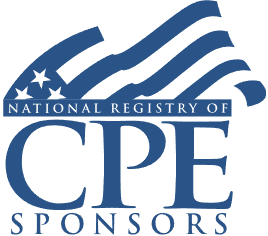R&D Credit: Expanded Statistical Sampling for Small Businesses and Safe Harbor for LB&I Taxpayers
Determining QRA and QREs, Increasing R&D Expenditures, Documentation and Nexus, Calculations Under ASC Topic 730

Welcome! Strafford is now BARBRI! The expert courses you know from the trusted global leader in legal education.
Course Details
- smart_display Format
On-Demand
- signal_cellular_alt Difficulty Level
Intermediate
- work Practice Area
Corporate Tax
- event Date
Thursday, December 10, 2020
- schedule Time
1:00 p.m. ET./10:00 a.m. PT
- timer Program Length
110 minutes
-
BARBRI is a NASBA CPE sponsor and this 110-minute webinar is accredited for 2.0 CPE credits.
-
BARBRI is an IRS-approved continuing education provider offering certified courses for Enrolled Agents (EA) and Tax Return Preparers (RTRP).
This course will guide tax professionals and advisers on claiming the IRC Section 41 Research and Development (R&D) Income Tax Credit for small businesses and large business and international taxpayers. The panel will discuss statistical sampling for multiple tax years for small companies, the safe harbor for large taxpayers for calculating certain qualifying research expenditures (QREs) provided under the recent LB&I directive, and techniques to assist in documenting and claiming R&D credits.
Faculty

After graduating from Rice University with a B.S. in Chemistry and spending a few years in the laboratory, Mr. Bryson took an opportunity to go from conducting R&D to helping companies capitalize on their R&D. As a consultant over the last 12 years, he has led the R&D department at a national tax advisory firm, assisted companies in capturing nearly $500mm in tax credits and incentives, and served companies of all sizes. His work quickly branched off from chemicals to pharmaceuticals, wine/beer/spirits, food, agriculture, manufacturing, engineering, architecture, software, technology, architecture, engineering, defense contracting, and more. He learned to identify the potential for R&D in industries of all types and how to document and substantiate it to put the client in the best position possible. Mr. Bryson approaches his consulting practice with the mindset of both a scientist and a trusted advisor, one of client-focused service and data-driven results.

Ms. Garcia focuses her practice on managing and implementing R&D Tax Credit studies. Previously, at a consulting firm, she led the company’s software implementation group and was published several times for her expertise in software-specific issues such as gaming and state tax incentives for digital media. Although she specializes in software technology, she implemented hundreds of R&D studies for virtually every sector of software development, from healthcare, financial trading platforms and energy management to video game development and cloud computing.
Description
The R&D tax credit provided under IRC Section 41 may apply to any taxpayer that incurs expenses for performing qualified research activities (QRA). Adjusted guidelines recently issued by the IRS for small businesses and the safe harbor under recent Large Business and International Division (LB&I) directives make the process of calculating and obtaining the R&D credit easier for taxpayers subject to these rules.
Statistical sampling only requires a portion of a company's records for review and documentation to support qualifying expenses. Documentation required by the IRS for an R&D study must meet the requirements of a four-part test for an expense to qualify for the credit along with establishing a sufficient nexus with QRA. This process has proven challenging and costly for small businesses and startups who typically forego the credit based on the costs associated with efforts to support qualifying expenses.
The IRS allows multiple tax years under one statistical sample study, which reduces the required sample size and costs associated with documenting the credit. Tax advisers to small businesses and startups must consider methods in determining QREs and adhere to specific requirements to take advantage of this approach to statistical sampling.
For larger companies, the LB&I released a directive that provides a safe-harbor method for calculating QREs allowing taxpayers to use R&D costs reported on financial statements under FASB Accounting Standards Codification (ASC) Topic 730, Research and Development. The method enables taxpayers to start with the R&D costs and make adjustments leading to QREs for claiming R&D credit under Section 41. Understanding the requirements of this method is essential to reducing costs and supporting the filing of credit claims for large taxpayers.
Listen as our experienced panel provides a thorough review of methods in determining QREs for multiple years for small and large businesses and best practices in calculating, claiming, and substantiating a Section 41 R&D credit.
Outline
- Overview of Section 41 R&D credit
- Four-part test to determine QRAs
- Documentation and substantiation of claiming Section 41 R&D credit
- Sampling and allocation methods for QREs available to small and mid-size businesses
- The LB&I directive providing safe harbor for calculating QREs for large taxpayers
- 2020 payroll tax deferral's impact on the R&D credit
Benefits
The panel will review these and other key topics:
- The four-part test to determining whether an activity can be considered a QRA for purposes of claiming a Section 41 R&D credit, as well as documentation and substantiation requirements and best practices
- Sampling and allocation methods for QREs available to small and mid-size businesses
- Safe harbor provided to large companies under recent LB&I directives to examiners and ASC Topic 730, including qualification and calculating QREs
- The 2020 payroll tax deferral Executive Order and its impact on the payroll R&D tax credit for Qualified Small Businesses
NASBA Details
Learning Objectives
After completing this course, you will be able to:
- Determine whether an activity qualifies as a QRA for purposes of claiming a Section 41 R&D credit
- Identify wage QREs and other indirect expenditures qualifying under Section 41
- Discern methods in statistical sampling to calculate QREs
- Recognize the safe-harbor method for calculating R&D credit in recent LB&I directives
- Field of Study: Taxes
- Level of Knowledge: Intermediate
- Advance Preparation: None
- Teaching Method: Seminar/Lecture
- Delivery Method: Group-Internet (via computer)
- Attendance Monitoring Method: Attendance is monitored electronically via a participant's PIN and through a series of attendance verification prompts displayed throughout the program
- Prerequisite: Three years+ business or public firm experience at mid-level within the organization, preparing business tax forms and schedules. Specific knowledge of business taxation, research and development tax credits, creditable expenses, qualified research activities, and documentation required to claim the IRC 41 tax credit.

Strafford Publications, Inc. is registered with the National Association of State Boards of Accountancy (NASBA) as a sponsor of continuing professional education on the National Registry of CPE Sponsors. State boards of Accountancy have final authority on the acceptance of individual courses for CPE Credits. Complaints regarding registered sponsons may be submitted to NASBA through its website: www.nasbaregistry.org.

Strafford is an IRS-approved continuing education provider offering certified courses for Enrolled Agents (EA) and Tax Return Preparers (RTRP).
Unlimited access to premium CLE courses:
- Annual access
- Available live and on-demand
- Best for attorneys and legal professionals
Unlimited access to premium CPE courses.:
- Annual access
- Available live and on-demand
- Best for CPAs and tax professionals
Unlimited access to premium CLE, CPE, Professional Skills and Practice-Ready courses.:
- Annual access
- Available live and on-demand
- Best for legal, accounting, and tax professionals
Unlimited access to Professional Skills and Practice-Ready courses:
- Annual access
- Available on-demand
- Best for new attorneys
Related Courses

Sales and Use Tax Issues for Construction Contractors
Thursday, October 23, 2025
1:00 p.m. ET./10:00 a.m. PT

Impact of OBBBA on SALT: Handling Multistate Tax Issues
Wednesday, November 5, 2025
1:00 p.m. ET./10:00 a.m. PT